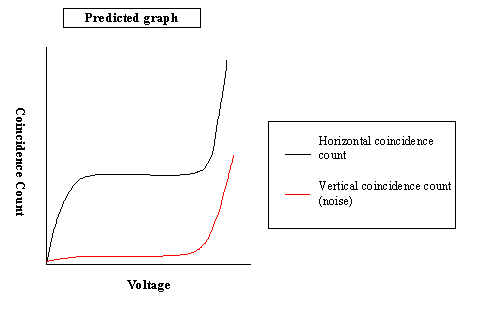How to adjust the voltage in a cosmic ray detector photomultiplier
Introduction
To ensure the detector is operating at its optimal level, the voltage of the photomultiplier tubes must be adjusted so that the voltage created when a cosmic ray passes through the scintillator is lower than the level set by the comparator.
On a Graph
Ideally, on a voltage vs. coincidence count graph (shown below), the desired point rests in an area called the “plateau”, where the coincident count rate remains relatively constant. Before reaching this plateau, the coincidence count should be increasing rapidly as the voltage increases, and the same should occur after the plateau.

Noise
When the voltage is set too high, there will be something called “phototube noise.” This noise is produced when the photons released from the scintillators overexcite the electrons in the phototube, creating noise. Noise interferes with the accurate measurement of coincidence cosmic ray counts and accounts for the rapid increase after the plateau. To monitor the noise, a second coincidence count is taken with the detector’s paddles set vertically. This should yield relatively low counts because there is only a small possibility that two different cosmic rays can hit both paddles, in that position, at the same time. When the count rate becomes extremely high, the voltage is too high and there is too much noise.
Measuring the Voltage
Because the singles rate for each paddle is proportional to its voltage, the singles count can be used as an indicator of the voltage level. You can also measure the voltage using a voltmeter to measure the voltage running through the ground wires.